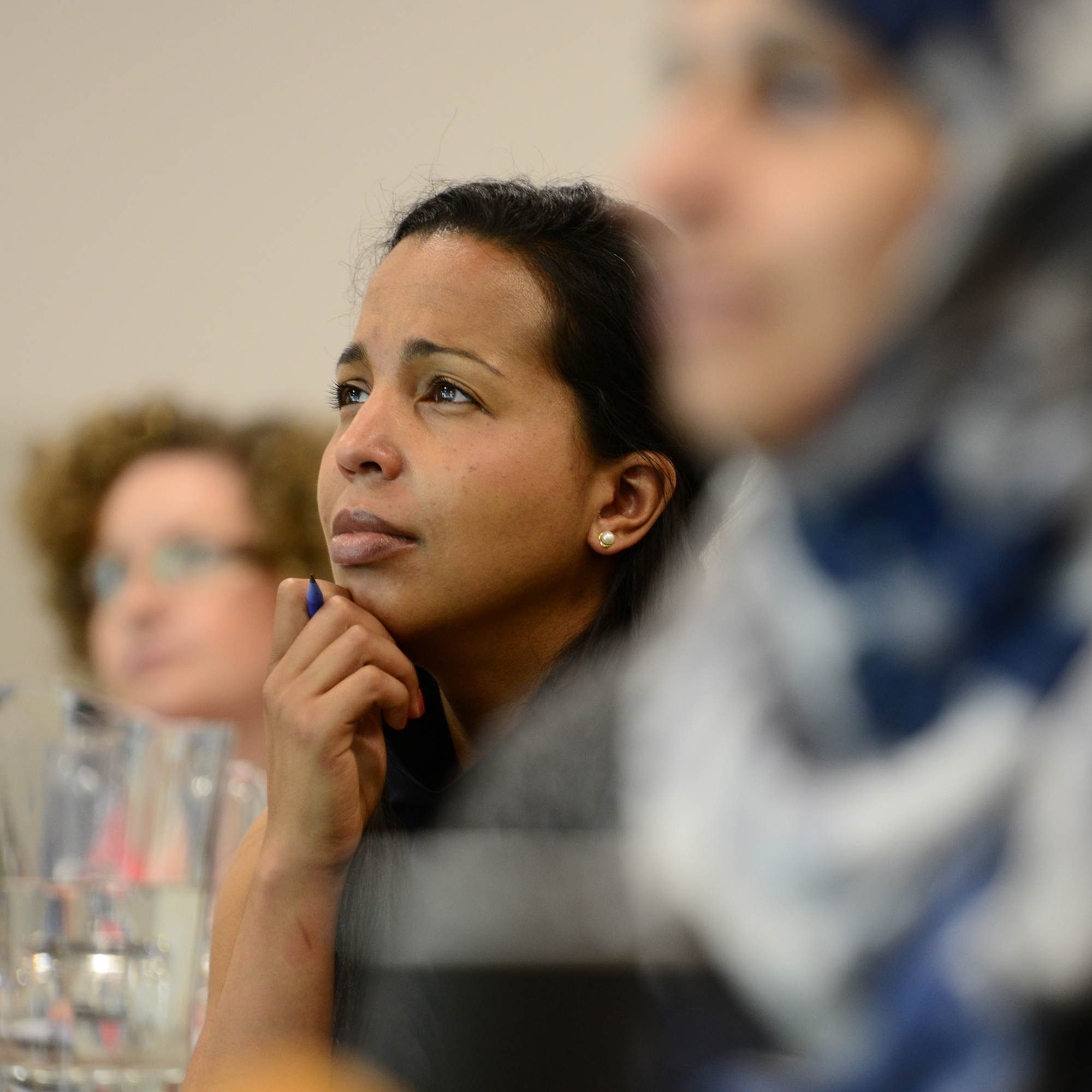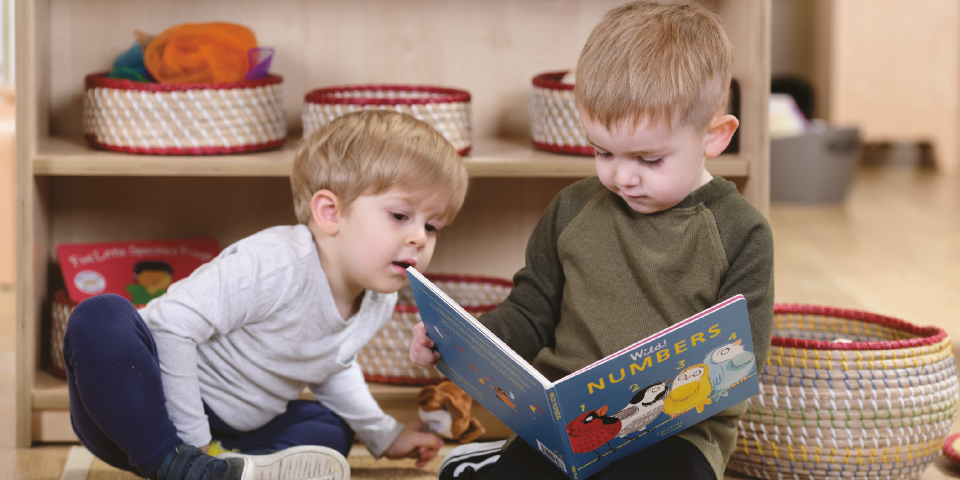Many of the schools and settings we work in partnership with have shared how they are now seeing more children with a broad range of complex and additional needs. Many of those children may have Special Educational Needs and/or Disabilities (SEND). To support you with this we are delighted to be working with Associate SEND Specialists, who have been developing a range of tools and specialist SEND CPD to help you and your team to successfully meet the needs of all children. In this latest blog, Gareth Shaw reflects on how we can create an EYFS environment that strengthens self-regulation, and highlights strategies to build authentic relationships that enable us to gain clarity of each child unique needs.
SEND Your Worries Away!
The new school year is now fully up and running.
You have your new class, everything was prepared. You’ve liaised with all the previous settings and poured over their reports and observations; all in attempt to have as clear a picture as possible of each child’s needs to make the transition process as successful as possible. Then the children started and suddenly it was all a very different world!
Amidst all the excitement and challenges of the new school year, what was it that made the difference to the start?
What did make the difference?
In many cases, your preparation will have given you a framework to provide what the children needed to settle and begin to thrive. Your planning gave you the handles you could use to make sure the resources gave children enough of the familiar to feel safe, but enough of the ‘new’ to be excited to start school. The care and attention you gave to each child ensured they felt welcome and safe, and they have already begun to establish those critical safe attachments to you and others in the class. Slowly but surely, the children have settled in to your EYFS.
But… there’s still a few children who are causing you concern.
Maybe you didn’t have much information about them before they started. Perhaps what you did receive doesn’t seem to match the child that you’ve seen so far. Or it could be that you’re just not sure how to meet a child’s needs. So what’s next when we begin to reflect on supporting children with SEND in the early years?
The most important thing is not to despair. Some of us shy away from sharing difficulties as we worry it might reflect badly upon our practice; but you need to remember that you’re not the only one going through this and you’ve not become a terrible teacher! If you are in a school where there is more than one class in your year group, make sure you find time to meet one another to talk about your children. If you are in a single-form entry school, then attend any local meetings you can and network with others. There are even online and social networking possibilities if you are so inclined to be part of those. Whatever you choose to do, don’t be alone. There are no medals given out to teachers who solve all the challenges of their classes on their own.
There are many reasons why sharing your experiences with others is so important. Firstly, it will help you get your worries and concerns off your chest. You’ll feel better for voicing them – and you don’t need to feel guilty about finding a child’s needs challenging. Secondly, you’ll discover that others are also going through the same thing. Their experiences will be different, sure, but I daresay every class will have at least one child who will be causing their teaching staff angst at this moment in time. Thirdly, and perhaps most importantly, you will be able to share ideas with others about what they have done and what has and hasn’t worked for them. No doubt, you’ll even have a few suggestions for others that might help them. See? You’re not so bad after all. We all have different experiences of supporting children with SEND in the early years and have much to learn from each other.
Another important step is to speak to is your schools SENDCo. Again, there are many reasons for this. Firstly, letting them know that there is a child who you need some help and advice with is crucial. How are they to know if you do not tell them? Having conversations early makes asking for direct support later much easier – and your SENDCo will have some idea of the background already and so be in a much better position to offer useful advice. Secondly, they may have immediate suggestions of strategies or interventions that might make all the difference in these early days. Thirdly, they may also be able to visit your class (make sure you choose a good time!), to observe or spend time with the child and so offer you suitable and tailored support. Lastly, informing your SENDCo will allow them to maintain an overview of the needs of all the children in the school and plan their work accordingly.
The importance of reflection
Alongside those interactions, it is equally important that you start making some notes. You can do this however you see fit – on a note pad, on a device, or in your mind. There are many things to consider, and it wouldn’t be possible to make a complete list of every angle you might need to approach your own situation from, but here are some ideas to get you started:
- What is it that you are concerned by, or that you find challenging?
- When does it occur?
- Would changing the schedule of events for individuals or the whole class make any difference?
- Is it a difficulty that relates to social groupings or particular people?
- Are there particular places in the school or classroom that commonly feature?
It helps if you can be as specific as possible when getting your thoughts together as it will help you to unpick the nitty-gritty.
The classroom environment
We talk about creating an enabling environment in the early years, and an essential part of this process is to ensure that it is enabling for all the children. One method that can help you to both unpick and reveal possible causes of challenges in your class is to think about your classroom as a series of interconnected environments. Each of these place demands upon children which they will either be able to meet (and thrive in) or will become barriers to their learning and development.
The social environment
We know that for some of our children in the early years, social development is their primary need and our learning environments may present many challenges for them to negotiate. Have you ever spent a whole day in a situation where you were forced to socialise, at a wedding or a party perhaps? How did you feel when you (finally) got home? Were you drained, exhausted by engaging in social niceties, from pulling out all your best stories or simply from being on your best behaviour all day? Have you ever considered that this is what we expect young children to do every day, even though we also accept that they are developmentally the least able to cope with this? How we manage children’s social environment is critical to also managing a whole range of behaviours and supporting children with managing a whole range of emotions.
The emotional environment
We have all heard now about the importance of children learning to regulate their emotions in the early years. But what part do we play in teaching them to be able to do this? One way is by ensuring that the emotional challenges they face are developmentally appropriate to them – and remember that this is different for every child in your class! Just because most of the children (outwardly) cope with your environment arranged and scheduled as it is, does not mean it suits all of them – or that a change for one might be better for all. For every child who is outwardly displaying signs of emotional dysregulation there are probably more who are dealing with this in a less socially disruptive, but no less emotionally damaging, way. How safe, how secure, how valued, is that child feeling and what is it that you can do to help? What can you do to help them develop their relationships with you, the other staff and (perhaps most importantly), the other children?
Sensory environment
You will have witnessed events such as children identifying which of the bundle of identical school uniform jumpers is theirs by sniffing each one, or the child who continually mouths every toy or resource they can get their hands on. Many young children with SEND often appear to be more ‘tuned in’ to the differences in not just the way environments look, but also how they smell, taste, feel and sound like. As adults, we get some sense of this when we step into extraordinary spaces, such as cathedrals or sports stadiums. The feeling in those spaces can remain with us the entire time we are there. So, how a child is feeling is not just affected by who they with, what they are doing and what demands are placed upon them by others but also by how they quite literally feel in the space they are in.
The physical environment
You know that the design and layout of your classroom is crucial to children’s learning in the EYFS. Using continuous provision and having easy access to the things they need to explore their ideas and fulfil their plans is fundamental to early years practice. How the space is laid out is also essential to supporting children’s holistic needs as well. Does your environment give children the opportunity to engage purposefully? Are there spaces where they can feel comfortable? What is familiar to your children in your classroom? Sometimes it can be as simple as offering activities at the heights that children wish to engage with them and not changing our environment or resources repeatedly.
What next?
It must be stressed that there are rarely ‘quick wins’ to addressing the needs of one child with SEND (or a small group of children), for whom the start of school appears to have been difficult. It is even rarer for there to be only one change or intervention that is required to resolve these challenges. However, by looking at your early years provision from the child’s perspective, it is possible to make changes that will incrementally improve the ‘fit’ between your provision and the needs of each of the children in your class.
Thank you to Gareth Shaw, Associate SEND Consultant, for his insights in this blog.
Find out more

Discover specialist tools and bespoke support to help you to reflect on your SEND practices. Develop provision and explore next step solutions to Meeting the Needs of Children with SEND in the Early Years on our dedicated SEND page.

Deepen your knowledge of supporting children with SEND in the early years with our specialist Strengthening SEND Practice in the EYFS course which focuses on developing your provision, practice and curriculum in relation to SEND.

Access practical support and reflect on SEND practice in the early years, with this FREE four-part Framework Tool: Supporting Children with SEND in the Early Years designed specifically for Leaders to assist with reflection and discussion.

